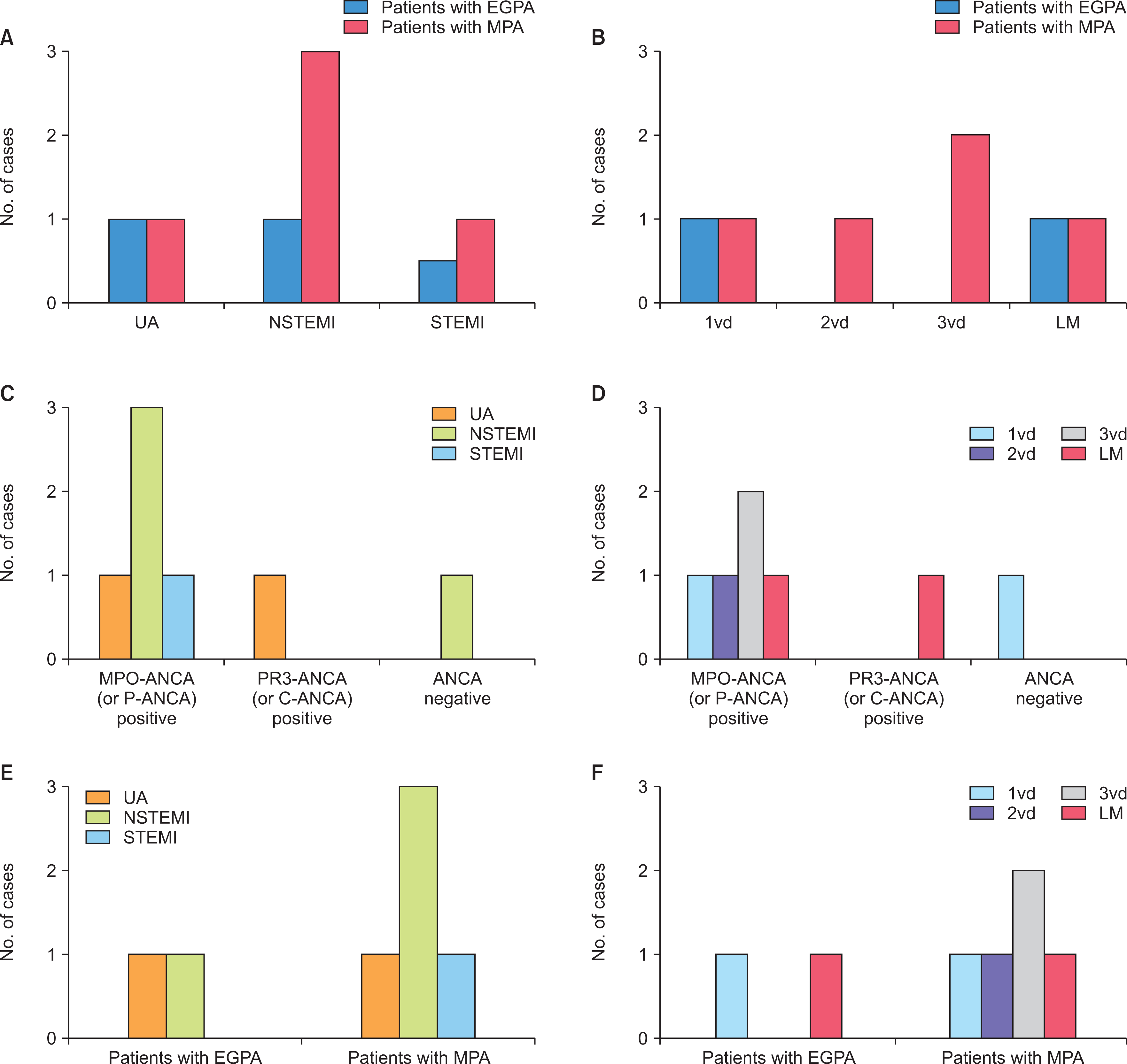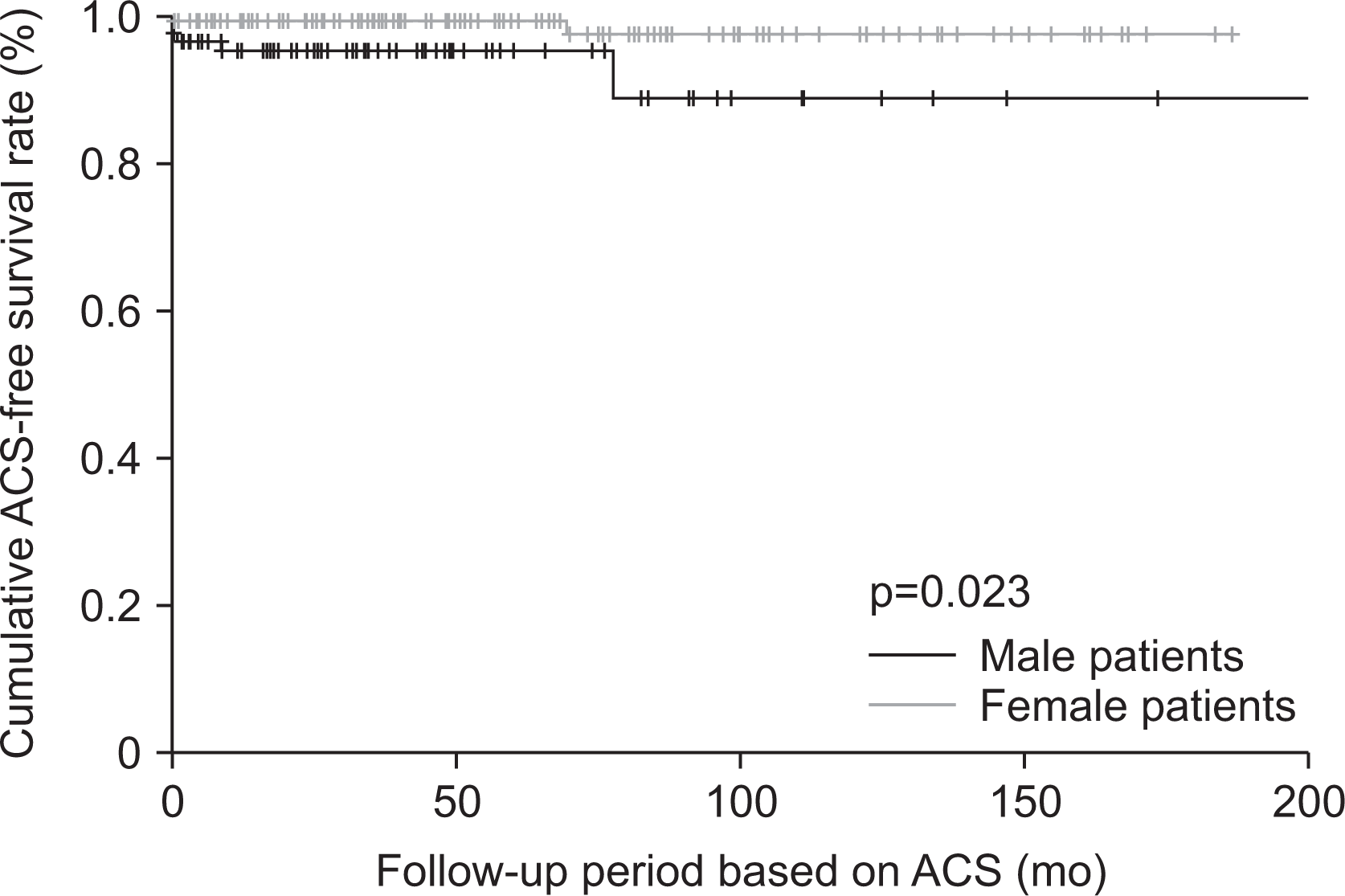1. Jennette JC, Falk RJ, Bacon PA, Basu N, Cid MC, Ferrario F, et al. 2013; 2012 revised International Chapel Hill Consensus Conference Nomenclature of Vasculitides. Arthritis Rheum. 65:1–11. DOI:
10.1002/art.37715. PMID:
23045170.
2. Watts R, Lane S, Hanslik T, Hauser T, Hellmich B, Koldingsnes W, et al. 2007; Development and validation of a consensus methodology for the classification of the ANCA-associated vasculitides and polyarteritis nodosa for epidemiological studies. Ann Rheum Dis. 66:222–7. DOI:
10.1136/ard.2006.054593. PMID:
16901958. PMCID:
PMC1798520.

3. Lee SW, Park YB. 2019; Classification of antineutrophil cytoplasmic antibody-associated vasculitis. J Rheum Dis. 26:156–64. DOI:
10.4078/jrd.2019.26.3.156.

4. Englund M, Merkel PA, Tomasson G, Segelmark M, Mohammad AJ. 2016; Comorbidities in patients with antineutrophil cytoplasmic antibody-associated vasculitis versus the general population. J Rheumatol. 43:1553–8. DOI:
10.3899/jrheum.151151. PMID:
27252425.

5. Faurschou M, Mellemkjaer L, Sorensen IJ, Svalgaard Thomsen B, Dreyer L, Baslund B. 2009; Increased morbidity from ischemic heart disease in patients with Wegener's granulomatosis. Arthritis Rheum. 60:1187–92. DOI:
10.1002/art.24386. PMID:
19333952.

6. Morgan MD, Turnbull J, Selamet U, Kaur-Hayer M, Nightingale P, Ferro CJ, et al. 2009; Increased incidence of cardiovascular events in patients with antineutrophil cytoplasmic antibody-associated vasculitides: a matched-pair cohort study. Arthritis Rheum. 60:3493–500. DOI:
10.1002/art.24957. PMID:
19877070.

8. Mukhtyar C, Lee R, Brown D, Carruthers D, Dasgupta B, Dubey S, et al. 2009; Modification and validation of the Birmingham Vasculitis Activity Score (version 3). Ann Rheum Dis. 68:1827–32. DOI:
10.1136/ard.2008.101279. PMID:
19054820.

9. Park PG, Pyo JY, Ahn SS, Song JJ, Park YB, Huh JH, et al. 2021; Metabolic syndrome severity score, comparable to serum creatinine, could predict the occurrence of end-stage kidney disease in patients with antineutrophil cytoplasmic antibody-associated vasculitis. J Clin Med. 10:5744. DOI:
10.3390/jcm10245744. PMID:
34945043. PMCID:
PMC8708376.

10. Kim MK, Pyo JY, Ahn SS, Song JJ, Park YB, Lee SW. 2022; A retrospective analysis of antineutrophil cytoplasmic antibody-associated vasculitis aiming for an equation prediction end-stage renal disease. Clin Rheumatol. 41:773–81. DOI:
10.1007/s10067-021-05972-5. PMID:
34750691.
11. Guillevin L, Pagnoux C, Seror R, Mahr A, Mouthon L, Toumelin PL. French Vasculitis Study Group (FVSG). 2011; The Five-Factor Score revisited: assessment of prognoses of systemic necrotizing vasculitides based on the French Vasculitis Study Group (FVSG) cohort. Medicine (Baltimore). 90:19–27. DOI:
10.1097/MD.0b013e318205a4c6. PMID:
21200183.
12. Stone JH, Hoffman GS, Merkel PA, Min YI, Uhlfelder ML, Hellmann DB, et al. 2001; A disease-specific activity index for Wegener's granulomatosis: modification of the Birmingham Vasculitis Activity Score. International Network for the Study of the Systemic Vasculitides (INSSYS). Arthritis Rheum. 44:912–20. DOI:
10.1002/1529-0131(200104)44:4<912::AID-ANR148>3.0.CO;2-5. PMID:
11318006.
13. McAdoo SP, Medjeral-Thomas N, Gopaluni S, Tanna A, Mansfield N, Galliford J, et al. 2019; Long-term follow-up of a combined rituximab and cyclophosphamide regimen in renal anti-neutrophil cytoplasm antibody-associated vasculitis. Nephrol Dial Transplant. 34:63–73. Erratum. DOI:
10.1093/ndt/gfx378. PMID:
29462348. PMCID:
PMC6322443.

14. Murray CJ, Atkinson C, Bhalla K, Birbeck G, Burstein R, Chou D, et al. 2013; The state of US health, 1990-2010: burden of diseases, injuries, and risk factors. JAMA. 310:591–608. DOI:
10.1001/jama.2013.13805. PMID:
23842577. PMCID:
PMC5436627.
15. Kim J, Lee E, Lee T, Sohn A. 2013; Economic burden of acute coronary syndrome in South Korea: a national survey. BMC Cardiovasc Disord. 13:55. DOI:
10.1186/1471-2261-13-55. PMID:
23924508. PMCID:
PMC3751132.

16. Kitching AR, Anders HJ, Basu N, Brouwer E, Gordon J, Jayne DR, et al. 2020; ANCA-associated vasculitis. Nat Rev Dis Primers. 6:71. DOI:
10.1038/s41572-020-0204-y. PMID:
32855422.

17. Jennette JC, Falk RJ. 2014; Pathogenesis of antineutrophil cytoplasmic autoantibody-mediated disease. Nat Rev Rheumatol. 10:463–73. DOI:
10.1038/nrrheum.2014.103. PMID:
25003769.

18. Wang H, Liu Z, Shao J, Lin L, Jiang M, Wang L, et al. 2020; Immune and inflammation in acute coronary syndrome: molecular mechanisms and therapeutic implications. J Immunol Res. 2020:4904217. DOI:
10.1155/2020/4904217. PMID:
32908939. PMCID:
PMC7450309.

19. Lee JK, Kim H, Hong JB, Sheen SH, Han IB, Sohn S. 2020; Association of acute myocardial infarction with seropositive rheumatoid arthritis in Korea: a nationwide longitudinal cohort study. J Clin Neurosci. 78:97–101. DOI:
10.1016/j.jocn.2020.06.002. PMID:
32620475.

20. Jeong H, Baek SY, Kim SW, Eun YH, Kim IY, Kim H, et al. 2017; Comorbidities of rheumatoid arthritis: results from the Korean National Health and Nutrition Examination Survey. PLoS One. 12:e0176260. Erratum. DOI:
10.1371/journal.pone.0178309. PMID:
28542532. PMCID:
PMC5436868.

21. Kook HY, Jeong MH, Oh S, Yoo SH, Kim EJ, Ahn Y, et al. 2014; Current trend of acute myocardial infarction in Korea (from the Korea Acute Myocardial Infarction Registry from 2006 to 2013). Am J Cardiol. 114:1817–22. DOI:
10.1016/j.amjcard.2014.09.019. PMID:
25438907.

22. Schiefermueller J, Alaour B, Calver A, Curzen N. 2017; Lesson of the month 1: beware the atypical presentation: eosinophilic granulomatosis with polyangiitis presenting as acute coronary syndrome. Clin Med (Lond). 17:180–2. DOI:
10.7861/clinmedicine.17-2-180. PMID:
28365634. PMCID:
PMC6297632.

23. Wagner AD, Meyer GP, Rihl M, Rathmann A, Wittkop U, Zeidler H, et al. 2007; Acute coronary syndrome associated with Churg-Strauss syndrome. Vasc Health Risk Manag. 3:775–9.
24. Correia AS, Gonçalves A, Araújo V, Pereira JM, Rodrigues Pereira P, et al. Almeida e Silva J. 2013; Churg-Strauss syndrome presenting with eosinophilic myocarditis: a diagnostic challenge. Rev Port Cardiol. 32:707–11. DOI:
10.1016/j.repc.2012.10.017. PMID:
23890465.

26. Pagnoux C, Chironi G, Simon A, Guillevin L. 2007; Atherosclerosis in ANCA-associated vasculitides. Ann N Y Acad Sci. 1107:11–21. DOI:
10.1196/annals.1381.002. PMID:
17804528.

27. Frustaci A, Alfarano M, Verardo R, Agrati C, Casetti R, Miraldi F, et al. 2021; Myocarditis-associated necrotizing coronary vasculitis: incidence, cause, and outcome. Eur Heart J. 42:1609–17. DOI:
10.1093/eurheartj/ehaa973. PMID:
33355356. PMCID:
PMC8088814.

29. Wick G, Jakic B, Buszko M, Wick MC, Grundtman C. 2014; The role of heat shock proteins in atherosclerosis. Nat Rev Cardiol. 11:516–29. DOI:
10.1038/nrcardio.2014.91. PMID:
25027488.

31. Bijl M. 2003; Endothelial activation, endothelial dysfunction and premature atherosclerosis in systemic autoimmune diseases. Neth J Med. 61:273–7.
32. Millet A, Pederzoli-Ribeil M, Guillevin L, Witko-Sarsat V, Mouthon L. 2013; Antineutrophil cytoplasmic antibody-associated vasculitides: is it time to split up the group? Ann Rheum Dis. 72:1273–9. DOI:
10.1136/annrheumdis-2013-203255. PMID:
23606701.

33. Mavrogeni S, Karabela G, Gialafos E, Stavropoulos E, Spiliotis G, Katsifis G, et al. 2013; Cardiac involvement in ANCA (+) and ANCA (-) Churg-Strauss syndrome evaluated by cardiovascular magnetic resonance. Inflamm Allergy Drug Targets. 12:322–7. DOI:
10.2174/18715281113129990054. PMID:
23909889.

35. Kim Y, Ahn Y, Cho MC, Kim CJ, Kim YJ, Jeong MH. 2019; Current status of acute myocardial infarction in Korea. Korean J Intern Med. 34:1–10. DOI:
10.3904/kjim.2018.381. PMID:
30612415. PMCID:
PMC6325441.

36. Mourguet M, Chauveau D, Faguer S, Ruidavets JB, Béjot Y, Ribes D, et al. 2019; Increased ischemic stroke, acute coronary artery disease and mortality in patients with granulomatosis with polyangiitis and microscopic polyangiitis. J Autoimmun. 96:134–41. DOI:
10.1016/j.jaut.2018.09.004. PMID:
30236485.

37. Ahn SS, Yoon T, Song JJ, Park YB, Lee SW. 2020; Lipid profiles in anti-neutrophil cytoplasmic antibody-associated vasculitis: a cross-sectional analysis. J Rheum Dis. 27:261–9. DOI:
10.4078/jrd.2020.27.4.261.

38. Zhuang Q, Shen C, Chen Y, Zhao X, Wei P, Sun J, et al. 2019; Association of high sensitive C-reactive protein with coronary heart disease: a Mendelian randomization study. BMC Med Genet. 20:170. DOI:
10.1186/s12881-019-0910-z. PMID:
31694563. PMCID:
PMC6836320.







 PDF
PDF Citation
Citation Print
Print




 XML Download
XML Download